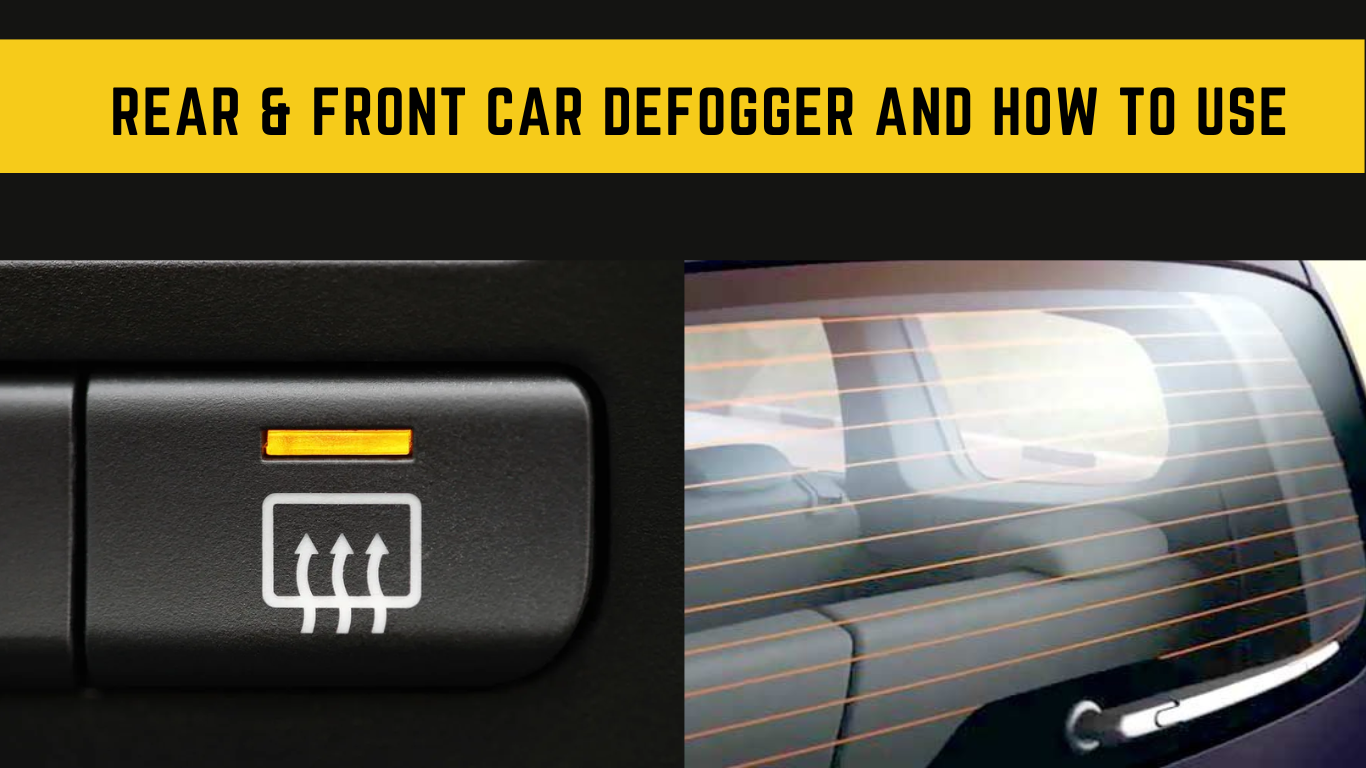Defogger in Car: Rear & Front Car Defogger and How to Use

3000 Views
A defogger is a vital car component that eliminates condensation from windows, ensuring clear visibility during foggy or humid conditions. There are two types: front and rear.
A defogger is a device that gets rid of condensation from the windows of a car. It works by circulating the warm air in the windows. The heat from the air evaporates the condensation, clearing the windows.
Defoggers are more important in cold weather when the temperature difference between the outside and inside of the car can cause condensation. They also can be helpful in humid weather when the air is already saturated with moisture.
There are important forms of defoggers: the front defoggers and rear defoggers. Front defoggers are located in the dashboard and use the car’s heating system to circulate warm air. Rear defoggers are located in the rear window and use electrical heating factors to warm the glass. Let’s discuss the types of defoggers in more detail.
Types of Defoggers
Defoggers are vital car additives that assist in holding clean visibility in the course of foggy or humid climate conditions. They work by means of getting rid of condensation from the car’s home windows, making sure a secure and unobstructed view for drivers. There are primarily two types of defoggers in cars: front defoggers and rear defoggers.
Front Defoggers
Front defoggers are generally used for the windshield, the largest glass surface in the car. They use the automobile's heating, air flow, and air conditioner (HVAC) machine. When activated, the defogger attracts in fresh air from out of doors, passes it via the heater middle, and then directs the warm, dry air via vents strategically placed to blow over the windshield's indoor floor.
The heated air correctly evaporates condensation from the windshield, clearing the fog and imparting a clear view beforehand. Front defoggers are normally extra effective for doing away with heavier fog, as they could flow into a bigger quantity of heat air throughout the windshield.
Rear Defoggers
Rear defoggers, alternatively, are commonly used for the rear window and, in some instances, aspect-view mirrors. They function on a distinct principle, employing thin, electrically conductive wires or grids embedded within the glass. When activated, an electric modern passes via these factors, producing warmth that melts ice and evaporates condensation from the glass surface.
The thin wires or grids are often visible as quality lines jogging throughout the rear window. Rear defoggers are nicely appropriate for clearing light fog and frost, as they offer localised heating directly to the affected areas. They also devour less energy than the front defoggers, as they don't require circulating heat air at some point in the automobile's indoors.
How To Use A Defogger In A Car?
Here are the stairs on the way to use a defogger in the car:
- Start the car engine and let it run for a few minutes. This will supply the car's heating device time to heat up.
- Locate the defogger button. It is usually positioned at the dashboard, and it can have a symbol that looks as if three squiggly arrows or a rectangle with lines inside.
- Press the defogger button. The defogger will activate and start circulating heat air over the windshield.
- Adjust the fan pace and temperature settings. The fan pace has to be set to the very best place to speedy clean the fog. The temperature should be set to high if it's far cold outdoors, or to a comfortable stage if it's far warm outside.
- If the automobile has a rear defogger, turn it on as well. The rear defogger button is generally positioned at the rear window or close to the rear defroster vents.
- Wait for the fog to clean. This can also take a couple of minutes, depending on how excessive the fog is.
- Once the fog is cleared, turn off the defogger. You can also flip off the defogger if you want to regulate the climate manipulation settings.
Here are a few additional suggestions for the usage of a defogger:
- Make sure the vents are directed towards the windows. This will help to flow into the nice and cosy air extra effectively.
- Wipe down the home windows with an easy material before the use of the defogger. This will help to cast off any dust or debris that might clog the vents.
- If the fog may be very heavy, you may need to scrape the ice off the windows earlier than the usage of the defogger. This will help the defogger to work extra efficiently.
- By following these recommendations, you may fast and without problems clean the fog out of your vehicle windows and live securely on the street.
Maintenance and Care: Keeping Your Defogger in ShapeJust like some other automotive components, defoggers require regular protection and care to ensure certain finest overall performance and sturdiness. Here are a few crucial recommendations for preserving your defoggers in top form:
Clean the vents often: Dirt, dirt, and debris can be acquired within the vents, obstructing airflow and decreasing the defogger's effectiveness. Use a smooth brush or vacuum cleaner to gently eliminate any debris from the vents.
Inspect the wires or grids: Secondary defoggers, which use embedded wires or grids, must be inspected for any symptoms of harm or corrosion. If you notice any damaged or corroded wires, consult a certified automobile technician for restoration or replacement.
Check the electric connections: Ensure that the electric connections for the defogger are secure and free from corrosion. Loose or corroded connections can disrupt the waft of strength and hinder the defogger's operation.
Test the defogger often: Be positive to check your defogger earlier than you come upon a foggy climate. Activate it periodically to ensure it's functioning properly. This will help you become aware of any problems early on and take corrective movement.
Avoid harsh cleaning retailers: Avoid using harsh cleaning retailers or abrasive materials on the defogger factors, as this can harm delicate wires or grids. Use a moderate cleaning soap and water answer for gentle cleansing.
Seek professional attention when wanted: If you note any chronic issues together with your defogger, along with inconsistent performance, negative defogging, or unusual noises, consult a qualified car technician.
By following these maintenance recommendations, you can increase the lifespan of your defoggers and make sure they offer clear visibility all through foggy or humid riding situations. Remember, a properly maintained defogger is an essential issue for secure driving.